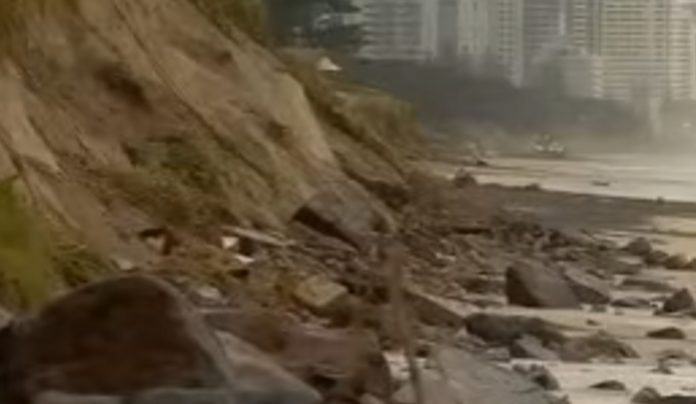The movement of water can naturally restore a beach. It may also cause beach erosion to occur. With the perpetual motion of water that comes up against a shoreline, any movement that is out of the ordinary can cause an immediately negative erosive impact. One strong storm can dramatically alter a beach.
The solutions to beach erosion are therefore dependent on local conditions and needs. In many areas, if a beach is threatened with erosion, then the local economy is also threated. That’s why sometimes millions of dollars have been spent on solutions like these.
1. Beach Nourishment
This solution involves the pumping of sand or dumping sand from another source onto the beach that is eroding. It is a process that can create a new beach, widen an existing beach, or provide added support to the existing infrastructure. The benefit of this solution is that it can immediately restore a beach. The disadvantage is that it will not actually stop the erosion cycle. New sand must be continually added to counteract the erosive process.
2. Groin (Groyne) Installation
What is a beach groin? It is a rigid hydraulic structure that is built from the shoreline to interrupt the flow of water and limit the movement of sediment. Part of the issue with beach erosion is that the longshore drift will often wash sands away. This solution to beach erosion interrupts that process so that the sand can be trapped. Groins can be made from boulders, concrete, steel, or even wood.
3. Offshore Breakwaters
When a breakwater is installed about 200-300 feet from a beach, then it will slow down the movement of the incoming waves. With reduced water movement, there is a lower risk of beach erosion occurring. This solution to beach erosion can save the majority of a beach, but may also divert wave energy to the flank of the breakwater so that the edges of a beach see even greater erosion.
4. Beach Lifters
A company called Holmberg Technologies has created a textile product which can literally lift a beach upward in elevation. When the sands of the beach are elevated, then the incoming currents are forced to reduce in speed. The increased height also allows for more sediment to be deposited through the natural motion of the wave.
5. WhisprWave
Dennis Smith has patented a new system of breakwaters that looks like a giant plastic snowflake. When strung together and anchored offshore like a traditional breakwater system, WhisprWave absorbs the energy of the waves without interrupting the movement of the sand. It operates in much the same way a Newton’s Cradle would operate. When the system receives energy, it transfers it and then continues to transfer it until it has been completely dissipated.
The solutions to beach erosion that work in one area may not work in others. Miami used beach nourishment in the 1980s and has not seen the same erosion they once did. In areas of the US Northeast, beach nourishment may only last 2-3 years. That is why a local solution must always be implemented.
Crystal Lombardo is a contributing editor for Vision Launch. Crystal is a seasoned writer and researcher with over 10 years of experience. She has been an editor of three popular blogs that each have had over 500,000 monthly readers.


















